| |
|

SUNDAY. SEPTEMBER 7, 2008Ner Tamid Synagogue Open House and Barbeque
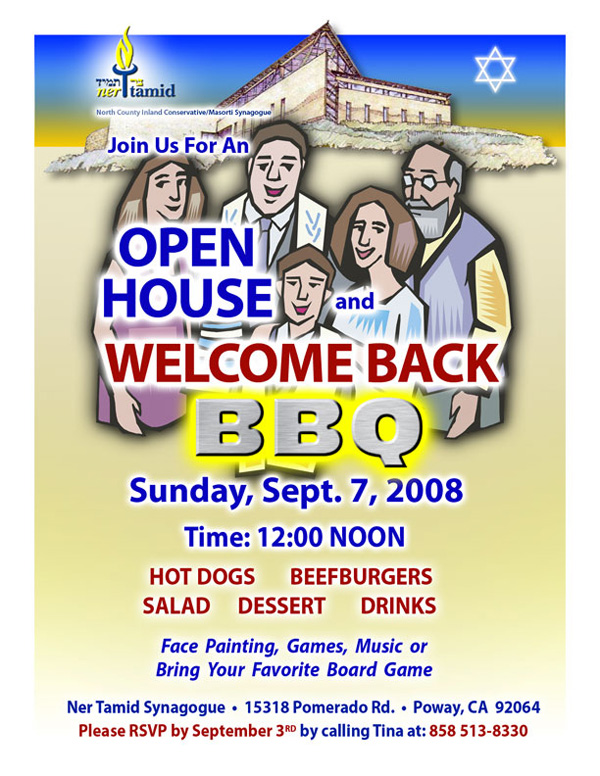
FRIDAY, SEPTEMBER 12, 2008 Temple Solel S'more Shabbat
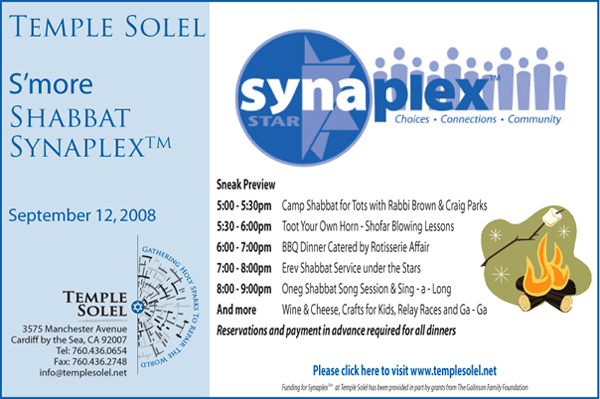

FRIDAY, SEPT. 12 - SUNDAY, SEPT 14 Temple Emanu-El dedication weekend.
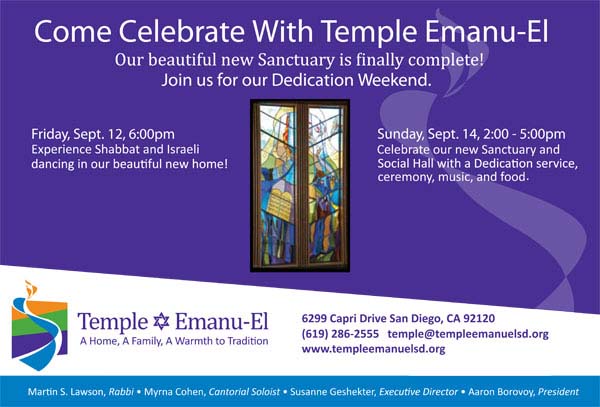

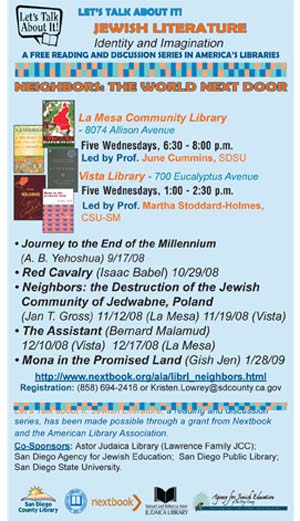 
MON., SEPT. 29-THURS., OCT. 9


Please actively support San Diego Jewish World

LETTER FROM JERUSALEM
Are olim more prone to child murder?
By Ira Sharkansky
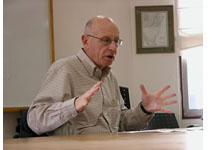 JERUSALEM--Israel is not just about borders, human rights, terror, and religion. It is also a place where parents kill their children. JERUSALEM--Israel is not just about borders, human rights, terror, and religion. It is also a place where parents kill their children.
For the past week, the media has highlighted three murders of children of 4 or 5 years old. We have heard a criminologist and a psychologist talking about the danger of copycat killings, where parents frustrated by their child, or some other trouble, turn to murder.
A young Frenchman, learning that the man who fathered him as a result of a casual affair was an Israeli, decided to visit along with his wife Marie and child Rose. It was a mistake to bring Marie. She and Grandpa fell in love. There was a divorce. The father of Rose returned to France with her. The mother remained in Israel to produce two more children with Grandpa Ron. She pursued legal proceedings in France to obtain Rose. The child was a problem. Perhaps she was autistic. Reports are that Grandpa killed her, with some degree of participation by Marie. Ron's mother (Rose's great-grandmother) reported the child missing only a month or more after her disappearance. The police have been looking without results for her body.
Within a week of hearing this story, there were two other cases. In one a mother drowned her four year old boy at the beach, and in another a mother drowned her son of similar age in a bathtub.
Experts admit to a limited capacity to explain the cluster. Among the common traits in the most recent two cases are single mothers, both migrants from the former Soviet Union.
The Ministry of Immigration Absorption is adamant in refusing an explanation that immigrants are prone to violence. They also note the social services provided to immigrants in order to help in their adjustment. Yet reports of violence among youth or in families often come to us with names that are Russian or pictures that are Ethiopian.
Social scientists have known for a long time that the experience of migration adds considerable stress to families. A classic description of the pathologies is William Thomas and Florian Znaniecki, The Polish Peasant in Europe and America (University of Chicago Press, 1918). My own migration was costly for the family, and I came as a tenured professor in the country's premier university. Almost all migrants come without the opportunities that I enjoyed for housing, employment and social contacts, as well as lacking language skills and a knowledge of the society.
Israel has profited immensely from the million or so Russian-speakers and the 40,000 or so Ethiopians who have come since the 1980s, as well as smaller numbers from Latin America, North America, France and the UK. The influence of the Russians is apparent whenever one goes to a concert, a hospital, or a clinic. Ethiopians came from a profoundly different background, but are now entering the officer corps of the military and the universities.
Russians and Ethiopians also appear frequently in the stories of violence and family tragedies.
With all its immigrants, and the extensive presence of pistols and machine guns in a society that considers itself threatened, Israel's incidence of violence is not high by international standards. One tabulation of recent homicides per 100,000 population includes the following examples. Venezuela: 65; South Africa: 39; United States: 5.7; Palestine: 4.0; Spain: 3.4; Switzerland: 2.9; Finland: 2.8; Israel: 2.6; Scotland: 2.6;
Northern Ireland: 2.5; Canada 1.9; England and Wales: 1.4
Horrible cases have appeared in countries with generally low rates of violence. In the last year media emphasized the Austrian man who kept a daughter hidden as his sex slave for 24 years, and a German cannibal. Palestinians reported a case of two adults, retarded, kept in a cage in the cellar since childhood by a family who was ashamed of them.
Israel has numerous boarding schools, some set up years ago as orphanages for children from the Holocaust or other cases of persecution. Now they serve families who cannot cope with children at home, or children taken from their homes by social service agencies. Some of the youngsters come from overseas, sent by families who think that Israel would be good for them.
In response to the recent killings, professionals have urged family members, neighbors, kindergarten teachers, physicians and others to be alert to signs of trouble. We wonder if all us assigned to the task of big brother will add or detract from the quality of the society.
There have been several days without another report of a child killed in its family. We hope for many more such days
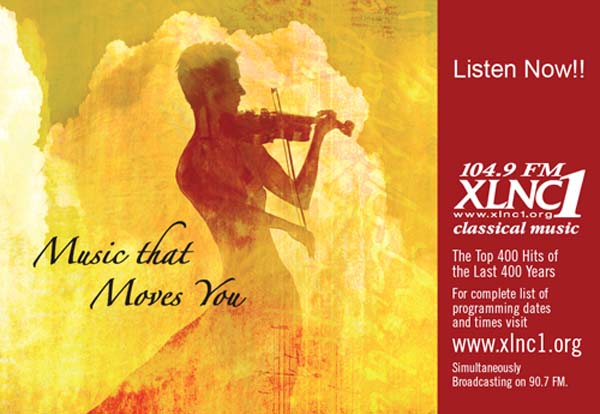


A HERALD IN ZION
Israelis trust IDF and the media more
than they trust their politicians
By Dorothea Shefer-Vanson
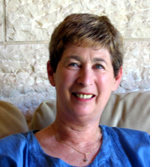 MEVASSERET ZION, Israel—Hardly surprisingly, a recent survey has found that most Israelis have little confidence in the country’s political leadership. They have slightly more confidence—but still not much—in such institutions as the courts, the police, and the attorney general’s office. The current President, Shimon Peres, is perceived as being better than his predecessor, though, again, coming hard on the heels of a serial sexual offender that can hardly be difficult. MEVASSERET ZION, Israel—Hardly surprisingly, a recent survey has found that most Israelis have little confidence in the country’s political leadership. They have slightly more confidence—but still not much—in such institutions as the courts, the police, and the attorney general’s office. The current President, Shimon Peres, is perceived as being better than his predecessor, though, again, coming hard on the heels of a serial sexual offender that can hardly be difficult.
So who do Israelis trust? The answer is somewhat strange for someone brought up to believe in the inherent benefits of the democratic system: the IDF and the media. It is true that Israel’s communications media, both printed and electronic, invest a great deal of time and effort in endeavouring to show the true face of the country’s leaders. But that is just another facet of what journalists the world over do, whether genuinely in search of the truth or in order to boost circulation or ratings. After all, scandals are good for sales, and the juicier the better.
The IDF, for its part, is one of the great levelers in Israeli society. It takes in a large proportion of the country’s 18 year-olds, trains them in a variety of skills, gives them responsibility, and in many cases enables them to overcome the disadvantages of an underprivileged background. Not all Israel’s soldiers serve at the front, and many emerge after three years of service as mature, well-rounded individuals.
Israelis have always been fairly cynical about their politicians. When I first came to Israel, in the Sixties, the epitome of corruption was one Kalanter, whose name had become a synonym for political dishonesty. The gentleman had had the temerity to cross the floor of the Knesset and join a different political party, apparently for personal gain. No-one bothered to point out that no less a personage than Winston Churchill had done pretty much the same (he moved from the Conservatives to the Liberals in1904, and back again in 1924), though perhaps for loftier motives. How tame the opprobrium attached to ‘Kalanterism’ seems today, when party allegiance is as stable as the latest opinion poll results.
In Israel today you cannot open a newspaper or watch the news on television without being regaled with tales of the latest bribe-taking scandal, sexual offences or political shenanigans of Knesset Members, cabinet ministers, religious leaders, income-tax officials, bankers, civil servants, industrialists or members of the legal profession. If you are planning to become a public figure expect to have salacious details of your finances and/or your private life held up for public display.
Israel’s political system is inherently flawed, its system of proportional elections inevitably preventing any party from gaining a clear majority. A system of government based on coalitions provides ample room for political blackmail. England’s system of regional representation has its drawbacks, but at least you generally have one clear winner.
High-school students in Israel have to pass an exam in Civics in order to obtain their full Bagrut (school-leaving certificate). Students are required to prove their familiarity with Israel’s system of government, legal system, social institutions, demographic makeup and history.
I don’t envy anyone who has to teach that subject. The theory is so far removed from actual practice that a clash between the two in the classroom is inevitable. Israel’s political system undoubtedly needs a thorough overhaul. I suspect that what eventually happens is that the students, who are in their last year or two of high school and about to go into the army, suffer from acute cognitive dissonance. One way of coping with this is to become cynical, and that doubtless explains the results of the survey.


Gotthelf Art Gallery opens exhibition of emerging Jewish artists
CAMPAIGN 2008 Guest Column
Obama worries some Israel supporters
By Michael Goldblatt
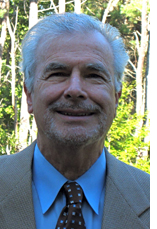 HUNTINGTON VALLEY, Pennsylvania—By now, everyone knows of Senator Barack Obama's pastor, Rev. Jeremiah Wright and his extreme statements about America and racist ravings about whites. Less well known is his record on Israel – calling for divestment from the country; blaming Israel for 9/11; publishing Hamas propaganda in his church's bulletin, accusing Israel of "state terrorism" and honoring and praising black racist Nation of Islam leader and outspoken anti-Semite, Louis Farrakhan. HUNTINGTON VALLEY, Pennsylvania—By now, everyone knows of Senator Barack Obama's pastor, Rev. Jeremiah Wright and his extreme statements about America and racist ravings about whites. Less well known is his record on Israel – calling for divestment from the country; blaming Israel for 9/11; publishing Hamas propaganda in his church's bulletin, accusing Israel of "state terrorism" and honoring and praising black racist Nation of Islam leader and outspoken anti-Semite, Louis Farrakhan.
Senator Obama has tried to rationalize Wright's hate speech as being the product of adversity and a growing up with discrimination. But Jews were at the forefront fighting for civil rights. Israel itself has an excellent record helping the states of Africa in the medical, educational and agricultural spheres. Wright's invective against Israel lacks basis and calls to mind Martin Luther Kings' words: "When people criticize Zionists they mean Jews, you are talking anti-Semitism."
There is no doubt that Wright hates Israel. The question is – does Wright's influence affect how Obama thinks about Israel? Obama has attended his church and confided in Wright for nearly 20 years.
True, Obama made several pro-Israel statements regarding the importance of Israel as an ally and supporting its right to self-defense during the 2006 Lebanon war. But there is grave doubt that these statements actually represent his views. Wright, addressing the National Press Club recently, said that Obama is merely saying what he needs to say to get elected.
If so, it wouldn't be the first time. Obama said on the campaign trail to Ohio voters that he would unilaterally withdraw from the North Atlantic Free Trade Agreement (NAFTA). But Obama's chief economic adviser, University of Chicago professor Austan Goolsbee, told Canadian officials that this was simply campaign rhetoric aimed at Ohio primary voters.
Another revealing case is that of Ali Abunimah, a Palestinian activist who supports the dismantling of Israel and the creation of a single Palestinian-dominated state. Abunimah has been a friend of Obama for years and has written that Obama was once highly critical of Israel but that his rhetoric changed when he ran for the Senate. He says that, in 2004, Obama told him, "Hey, I'm sorry I haven't said more about Palestine right now, but we are in a tough primary race. I'm hoping when things calm down I can be more up front … Keep up the good work!"
All this points to an approach to Israel that is likely to be highly confrontational and even hostile, despite the soothing words Obama is using at the moment. One must also be worried that he is receiving endorsements from the Palestinian terrorist group Hamas, and anti-Israel figures like Michael Moore and former president Jimmy Carter.
Naturally, Obama can't control receiving unwelcome endorsements from others. Also, he has distanced himself – very belatedly – from Wright. But Obama can completely control whom he appoints as advisers. When it comes to Israel and the Middle East, his advisers seem uniformly hostile to Israel.
Prominent among them is diplomat Daniel Kurtzer, who pushed the Reagan Administration in 1988 to recognize the murderous PLO. Kurtzer has accepted PLO statements of moderation in English while ignoring its extreme statements in Arabic. He has applied pressure on Israel to make concessions to it. The mainstream Conference of Presidents of Major Jewish Organizations publicly criticized Kurtzer in 2001 for his intemperate criticism of Israel for killing a Palestinian terrorist leader. Dovish Israeli negotiators, like Itamar Rabinovitch, and former Israeli prime ministers Shamir and Netanyahu have all explicitly cited Kurtzer's hostility over the years.
Another Obama adviser, Robert Malley, heads a group of Middle East policy advisers for a think-tank funded (in part) by anti-Israel billionaire activist George Soros. Malley has urged that the 2003 Roadmap requirement for Palestinian to dismantle terrorist groups should be waived, that a comprehensive settlement be imposed, regardless of Israeli objections.
Obama's military advisor and national campaign co-chairman, Gen. Merrill 'Tony' McPeak alleged in 2003 when asked why there was a lack of action in the Israeli-Palestinian peace process, McPeak said, "New York City. Miami. We have a large vote – vote, here in favor of Israel. And no politician wants to run against it."
Then there is former Obama campaign senior staffer and foreign policy advisor, Samantha Power, who argued in April 2002 that the U.S. should stop financially supporting Israel's military and instead invest in a Palestinian state with U.S. forces on the ground to protect it from genocide by Israel. In February this year, Power expressed annoyance that the New York Times had admitted there was no 2002 massacre of Palestinians by Israel in Jenin. Power was later fired by the Obama campaign – not for anti-Israel statements, but for calling Hillary Clinton a "monster."
Another Obama adviser, Susan Rice, reportedly convinced John Kerry, when he was running for president in 2004, to announce that if elected he would appoint two of the most anti-Israel former high officials, Jimmy Carter and James Baker, as envoys. And there is also Zbigniew Brzezinksi, Jimmy Carter's national security adviser, someone with a long record of hostility to Israel, who has in the past also advised Obama. Brzezinski created controversy last year when he wrote a paper defending the Mearsheimer & Walt anti-Semitic tract on U.S. foreign policy and the pro-Israel lobby.
Everything from Obama's past – his radical politics, his decades-long association with Wright and his politically extreme church, testimonials from his anti-Israel associates as to his actual anti-Israel views and his choice of Middle Eastern advisers – points to someone who would be the least friendly president to Israel bar none. Americans who care for Israel and the American-Israeli alliance should be very afraid.

TORAH ON ONE FOOT
Christian saints and Jewish tzaddikim:
what is the meaning of graveside prayers?
By Rabbi Leonard Rosenthal
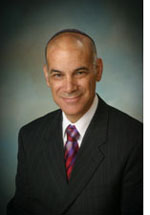 SAN DIEGO—I love going off on tangents because they are often more interesting than what I initially planned. During last week's Shabbat morning service we went on such a journey. I was speaking about Jews confusing church iconography with idolatry when one member said: "Yes, but even if Christians don't pray to statues, they still pray to the Saint represented by the statue and ask him or her to represent them before God. We Jews don't do that. We pray directly to God alone." SAN DIEGO—I love going off on tangents because they are often more interesting than what I initially planned. During last week's Shabbat morning service we went on such a journey. I was speaking about Jews confusing church iconography with idolatry when one member said: "Yes, but even if Christians don't pray to statues, they still pray to the Saint represented by the statue and ask him or her to represent them before God. We Jews don't do that. We pray directly to God alone."
I replied that there is also a tradition of Jews praying to the souls of the dead and asking them to intercede with God for them. I said I would find an example to share. I spent the next ten minutes scouring my Chumash and came up empty handed. I, nevertheless, was certain that I had found this tradition in Jewish texts.
When I began preparing for this week's D'var Torah I opened a book of commentaries and found one such example. It is an interpretation of a verse from this week's Torah reading: "Let no one be found among you who consigns his son or daughter to the fire, or who is an augur, a soothsayer, a diviner, a sorcerer, one who casts spells, or one who consults ghosts or familiar spirits, or one who inquires of the dead." (Deut: 18:10-11)
Moses is forbidding the Israelites from engaging in the occult practices of the Canaanites. He warns against child sacrifice, consulting wizards, casting spells, and fortune telling. On several occasions when we had "palm reading" in the synagogue, I asked that signs saying "For Entertainment Purposes" be placed near the attraction! Additionally the Torah forbids "one who inquires of the dead."
The Zohar says: "The dead being referred to are the dead of the idolaters, for they are the wicked ones of the world., but [the dead of] Israel, who are the righteous of the world, who died for the sake of the Torah, are considered as if they are still living.
Furthermore, when non-Jews go before their dead they use sorcery to arouse the spirits of their evil deceased for evil purposes. But when Jews go before their dead they do so in teshuva (repentance) and broken-heartedness. They request that the Holy Souls (they pray to) will request mercy for them before the Holy One Praised be God, and that the Holy One will have mercy upon the world for their sake." (Zohar Acharei Mot, quoted in B'shem Amru, Devarim, p. 191)
Whether one believes the Zohar, the essential book of Jewish mysticism, is reflecting formal Jewish religious belief or folk belief depends upon how one sees the Zohar! However, as the official city of Tzfat (Safed) website points out:
"Many Tzaddikim (righteous holy people) are buried around here. After all, as our sages are quick to point out, a Tzaddik never dies [LR: as noted above]. These graves tend to be located in some of the most scenic locations in the Land of Israel and most are easily accessible by foot or car. Many have been transformed into houses of prayer."
I supposed it can be argued that praying at the grave of a Tzaddik does not mean that one is praying to the Tzaddik instead of God, but surely worshipers must believe on some level that these places are more appropriate for prayer because of those who are buried there.
When I am in Israel I do visit burial sites of holy and heroic Jews but for the same reason I visit my own family's graves: as a sign of respect and to remember and honor their lives and good deeds. I do not go there to pray. Nor do I pray to any intercessor but to God alone. I prefer to follow the lead of the Torah in such matters, which not only forbids praying to the dead but makes sure that to this day no one knows where Moses is buried, lest he be venerated instead of God.
October activities offered at College Avenue Senior Center
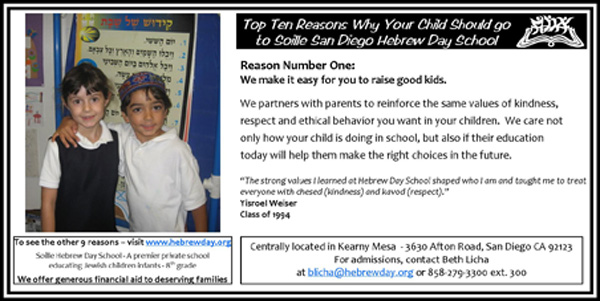

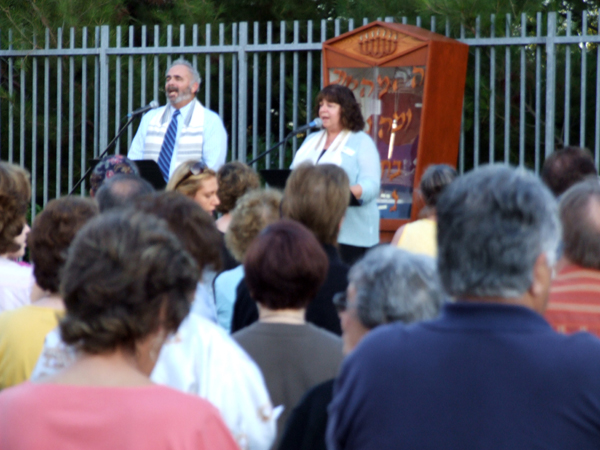
THE JEWISH CITIZEN
Zipping into learning at Beth Israel
By Donald H. Harrison
 LA JOLLA, California—At the “Shabbabeque”—that is the Shabbat barbecue—at the Reform Congregation Beth Israel , oldest and largest in San Diego County, attendees wore tags bearing not only their names but their postal zip codes. LA JOLLA, California—At the “Shabbabeque”—that is the Shabbat barbecue—at the Reform Congregation Beth Israel , oldest and largest in San Diego County, attendees wore tags bearing not only their names but their postal zip codes.
Rabbi Michael Berk told approximately 800 attendees on Friday evening, September 5, that the purpose of including the codes was so congregants could “look around and see if you are sitting next to a new neighbor, and introduce yourself.”
Unlike many congregations, which are neighborhood based, Beth Israel draws its membership from throughout San Diego County. Learning which congregants live in the same neighborhood increases the chances that such families may have interactions outside of the temple.
Berk called up Nancy and Rabbi David Katz, the new director of congregational learning, to kindle the Shabbat candles in behalf of the congregants who had spread themselves over a lower courtyard of the Beth Israel complex. Families arrayed themselves at picnic tables, on blankets on the lawn, on steps leading from upper levels of the complex, and even on playground equipment as services were conducted by Rabbi Berk and Cantor Arlene Bernstein in front of a portable aron kodesh.
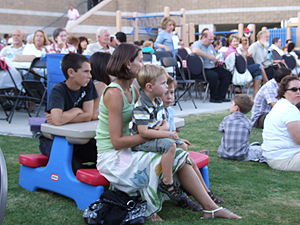 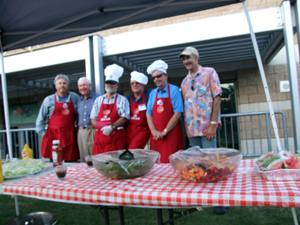
In his remarks to the congregation and in a brief interview with San Diego Jewish World, Rabbi Berk emphasized both learning and partnerships
With numerous children ranging from preschool to post bar mitzvah age in attendance, Berk retold a midrash devised by his friend Rabbi Mark Gelman about angels and humans learning about God’s purposes.
As the story went, before the creation of the world there was God along with some angels and “a few swirling gobs of rock and water with no place to go. The angels asked God ‘why don’t You clean up this mess?’ so God took the rocks from the great swirling gobs and put them together in clumps and said ‘some of these clumps of rocks will be planets, some will be stars, and some of these rocks will be just rocks.’ Then God collected water from the huge swirling cloud and put it together in pools of water and said ‘some of these pools of water will be oceans, some will be lakes, some will become rivers, some will become clouds, and some of the water will just be water.’”
Thereafter, God put growing things on this planet, and also made a man and a woman, telling them: “I am tired now, please fix up the world for me. Really, it is almost done.” The man and woman did not believe they were equal to such a task, but God told them, “If you keep trying to finish the world, I will be your partner. Never give up!”
Looking out over the grounds, where soon hot dogs, hamburgers, fruit, and desserts would be mass consumed, the rabbi smiled, and concluded: “so everyone remember, help us clean up.” As members of the Men's Club waited, some wearing chefs hats at jaunty angles, lines formed for a feast of hot dogs, hamburgers, watermelon, salad, and various desserts.
After he had shmoozed with many of the congregants, Rabbi Berk joined Nancy and our grandson Shor at a table that we shared with Beth Israel members Robert and Helaine Baum and their daughter and granddaughter, Andrea and Kira Gray. He noted that “we are at the precipice of the New Year (Rosh Hashanah) so we wanted to welcome everybody back. Most of the people here are members, who came to enjoy a nice casual outdoor Shabbat, but we are very careful to make sure that we know who the people are who have expressed interest in our synagogue. This is an event at which they can experience our community.”
Berk said he was amazed by the turnout. “Last year we had 400 people and we thought that was extraordinary,” he said. “This year we have almost double that. … I would like to think that it has to do with the mood here. People are feeling good and they are looking forward to getting back to that rhythm of the year—coming to the synagogue, going to the school…. We have been very focused on trying to make this a warm and welcoming community, so maybe we are succeeding.”
I asked what is ahead for Beth Israel.
“Well,” he replied, “we have a new director of congregational learning (Rabbi Katz) so we are looking forward to a new era in our religious school. We also have a wonderful array of programs, including a special program this year—we will be bringing Rabbi Donniel Hartman from Israel. He is director of the Hartman institute in Jerusalem, (a trans-movement study center founded by his father, Rabbi David Hartman) and he will spend a weekend here.”
Additionally, said Berk, “we are introducing the new Reform movement prayer book, and we are moving forward deliberately and aggressively on developing the whole programming side of a caring community.”
Rabbis Berk and Katz started at Hebrew Union College together in Jerusalem, then spent two more years in the same classes atthe HUC campus in Los Angeles. Thereafter, Berk moved on to complete his rabbinical studies at HUC Cincinnati, while Katz remained in Los Angeles to obtain an additional degree in education. Thereafter, he went to HUC New York where he completed his rabbinical studies. The two friends were ordained a year apart, Berk in 1980 and Katz in 1981. Until now, their careers had them serving on opposite ends of the country, with Berk on the west coast and Katz on the east coast.
Together, the two men plan to work together to “develop a vibrant, attractive youth program for all the things our young people do outside as well as inside the religious school.," said Berk. "He will be developing the curriculum, helping teachers. For a year or so, despite all the ideas that he has, he really will be learning the lay of the land. He is not going to turn the place upside down in one year, but will become part of the community and learn what our strengths and weaknesses are and where most attention is needed.”
Berk said Katz, as director of congregational learning, will branch out from the religious school to “look at the full educational picture from birth all the way to adulthood at our synagogue, and this is really the trend you see in larger trend-setting congregations—having an educational czar, if you will.”
The senior rabbi said that he personally will also be engaged in teaching: “At the religious school I get around to the different classrooms, and I also teach the Kabbalat Torah- Confirmation class. We have a very exciting new leadership development program where we have a group of people who have been asked to become part of this and get background and training in becoming a Jewish leader.” As if all that were not enough, Berk also plans to lead luncheon Torah study classes in the downtown San Diego business offices of some congregants.
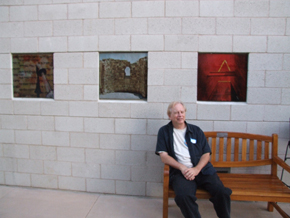 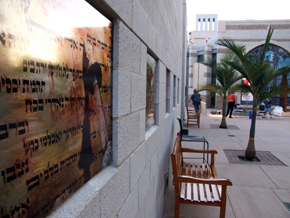
Digital photography is one of the classes for adults offered at Congregation Beth Israel. Its instructor, congregant Joe Nalven, escorted me to the north entrance of the temple grounds where five photographs laminated onto metallic plates are ensconced within wall niches. The first, taken inside Beth Israel’s sanctuary, is a stylized view of a Torah and a yad; the second a view from Masada bearing the legend “Masada shall not fail again;” the third and most brightly colored photograph, an infra-red close-up detail of a glass-and-metal structure at Yad Vashem, the Holocaust memorial museum in Jerusalem; the fourth, a photo of a young man praying at the Western Wall; and the fifth, a posterized photo of the tree-of-life design that is the theme within Beth Israel’s sanctuary.
Israel and Beth Israel are interwoven in this outdoor display that invites learning about the interrelationships among the nation of Israel, the people Israel and the Diaspora, said Nalven.


BASEBALL
A bissel sports trivia with Bruce Lowitt
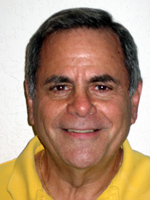 OLDSMAR, Florida-- Q: Who gave up Babe Ruth’s last home run for the New York Yankees and was the last American League pitcher to strike him out as well? OLDSMAR, Florida-- Q: Who gave up Babe Ruth’s last home run for the New York Yankees and was the last American League pitcher to strike him out as well?
(a) Syd Cohen
(b) Pablo Garcia
(c) Andy Cohen
(d) Preston Gomez
Background: He spent parts of three seasons with the Washington Senators in the mid-1930s, but is perhaps better known for pitching for Mexican-based Nogales in the minors, successfully masquerading as a Mexican because of his olive skin and fluency in Spanish.
Please click here for answers


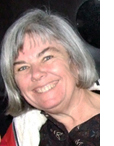 Nancy Harrison Nancy Harrison
cruise & tour specialist
(619) 265-0808
.

ADVENTURES IN SAN DIEGO JEWISH HISTORY
Editor's Note: To create a permanent and accessible archive, we are reprinting news articles that appeared in back issues of various San Diego Jewish newspapers. You may access an index of the headlines of those articles by clicking here. You may also use the Google search program on our home page or on the headline index page to search for keywords or names.
Late Flash
From Southwestern Jewish Press, January 13, 1950, page 1
Victor Schulman, President of the United Jewish Fund, announced that Murray D. Goodrich has accepted the Chairmanship of the U.J.F. 1950 Campaign.
Mr. Goodrich will shortly choose his aids (sic, aides) for the drive.
Hutler and Levenson to Attend Conference
From Southwestern Jewish Press, January 13, 1950, page 1
Two San Diegans will participate in the conference and program of the Western States Region Council of Jewish Federations and Welfare Funds when it convenes in Seattle on February 3, 1950.
The most important Resolutions Committee will be led by Eli H. Levenson.
The past president of the Fund will also chair the session on “Community Relations.”
Community leaders from the Southwest and the Pacific Coast will hear Albert A. Hutler, Executive Director of the United Jewish Fund, discuss “Planning Constructive Use of Leisure Time” during one of the sessions of the conference.
The Regional Conference is the annual meeting of all of the communities in the Southwest.
Rabbinical Assembly To Meet Here
From Southwestern Jewish Press, January 13, 1950, page 1
Rabbi Monroe Levens announced today that the Tifereth Israel Synagogue will be host to the Annual Conference of Southern California Region of the Rabbinical Assembly of America. Over 20 Rabbis will meet in San Diego on January 23rd, 24th and 25th, at which time they will devote themselves to a consideration of the problems facing Jewish life as a whole and the Southern California areas in particular. Dr. Jacob Kohn of Temple Sinai in Los Angeles is President of the Region and will preside at the sessions.
Keynote speaker for the Conference will be Dr. David Aronson, President of the Rabbinical Assembly of America, the National Association of the Conservative Rabbis.
Dr. Aronson is now serving as Visiting Professor of Rabbinics at the University of Judaism (West Coast branch of the Jewish Theological Seminary of America) in Los Angeles. Dr. Aronson is the author of the book, “The Jewish Way of Life,” and is noted as one of the outstanding and brilliant members of the American Rabbinate.
Israel Representative Talks on Investments
From Southwestern Jewish Press, January 13, 1950, page 1
At a luncheon meeting sponsored by Max Rabinowitz, Major S. Neaman explained the possibilities of buying bonds through Ampal (American Palestine Trading Corporation.)
The Major stated that the Corporation was formed in 1942 and is listed on the Stock Exchange. The funds of this corporation remain in the United States and Israel uses its credits to finance new businesses.
$20,000.00 worth of bonds were purchased by those attending the luncheon meeting.
{Return to top}


SPORTS TRIVIA ANSWER:


SAN DIEGO JEWISH WORLD: THE WEEK IN REVIEW
International
Tales of squill, wagtails and sunsets by Ulla Hadar in Kibbutz Ruhama, Israel
A lightning tour through South Italy's numerous Jewish historical sites by Karen Primack in Trani, Italy
Judaism
'Prayer isn't boring... You are' by David Benkof in New York
San Diego County
In tribute to Marie Berg and other community leaders who came before us by Donald H. Harrison in San Diego
Adventures in San Diego Jewish History:
—December 30, 1949: Episcopalian Rector Invites Cantor To Participate in Midnight Mass
—December 30, 1949: S.D. Lasker Lodge Bnai Brith Installation Set For January 8
—December 30, 1949: Congregation Tifereth Israel
International
Unlike Americans, Israeli families of politicians usually stay out of limelight by Ira Sharkansky in Jerusalem
Rabbi overcomes odds in Italy’s south by Karen Primack in Serrastretta, Italy
San Diego/Tijuana
American Reform group grows in Mexico by Gerry Greber in Tijuana, Mexico
Please actively support San Diego Jewish World~ways you can help
Adventures in San Diego Jewish History
—December 30, 1949: Tifereth Israel Junior League
—December 30, 1949: Council Nominates Officers for 1950:
—December 30, 1949 Memorial Altar Fund Drive Progressing
—December 30, 1949: Rabbi Cohn To Review ‘Why Jesus Died’
Arts
All is Vanities at Pasadena Playhouse by Cynthia Citron in Pasadena, California
Thursdays With the Songs of Hal Wingard
—#18, American Dream
—#23, Golden Shore
—#113, The Two Dollar Diamond
International
Children try to persuade parents to make aliyah from war-torn Georgia by Idan Peysahovich
Special Report: Internet AntiSemitism by Debora Stone in Canberra, Australia
The Jews Down Under, a roundup of Australian Jewish news by Garry Fabian in Melbourne:
—Year-long Israel odyssey inspires teacher
—NSW Premier announces security funding boost
—ECAJ President named to Claims Conference
—MP petitions Deputy Prime Minister to ban blog
—ADC calls for action against broadcasts
—Western Australian Jewish Community expands
—Central Synagogue feted with a grand concert
—Local lobby group apologizes
San Diego County
Neo-Nazi graffiti again plagues Ner Tamid by Donald H. Harrison in Poway, California
San Diego Jewish History
Adventures in San Diego Jewish History:
—December 30, 1949: J.C.R.A. by Anna Brooks
—December 30, 1949:Congregation Beth Jacob
—December 30, 1949:Beth Jacob Ladies Auxiliary
—December 30, 1949: Tifereth Israel Sisterhood
Arts
The Actors’ Gang brings the dead to life by Cynthia Citron in Culver City, California
International
Problems in U.S., Israel known; likely responses of leading candidates aren't by Ira Sharkansky in Jerusalem
Unusual ceremonies scheduled for Ramadan in Jerusalem and lifesaving at the Dead Sea by Judy Lash Balint in Jerusalem
San Diego County
Congregation Beth Am picnics on the green by Donald H. Harrison in San Diego
One of Jewish San Diego's favorite columnists walks—and writes!—again It's Gert Thaler in San Diego
San Diego Jewish History
Adventures in San Diego Jewish History:
— December 30, 1949:Jewish War Veterans of the United States by Binnie Brooks
— December 30, 1949:San Diego Birdie Stodel B’nai Brith Chapter No. 92 by Bess Borushek
— December 30, 1949:Senior Pioneer (Negba) Club
— December 30, 1949: Hadassah
Arts
Music of Our People, a collection of Jewish songs performed by Cantor Sheldon Merel of San Diego, debuts today on San Diego Jewish World with Adon Olam
International
Interfaith dialogue best at grassroots level by
Rabbi Dow Marmur in Toronto, Canada
Souvenirs not from U.S., Israel, but China by Donald H. Harrison in San Diego
National
Eco-activists rob U.S. of 'can-do' spirit by Sheila Orysiek in San Diego
Judaism
Arrival of family from Israel prompts the brit debate: who should do it and where? by Carol Davis in San Diego
Sports
Nike's 'Human Race' went well for red-shirted 10k runners in Tel Aviv by Ulla Hadar in Tel Aviv
San Diego Jewish History
—December 30, 1949: Life Begins for Rabbi Cohn
—December 39, 1949: Community Center Soccer Team
—December 30, 1949: Chaim Weizmann Labor Zionist Organization
—December 30, 1949: San Diego Hebrew Home Auxiliary
International
Amid Georgia's ruins, Jews weigh aliyah by Idan Peysahovich in Tbilisi, Georgia
Turkish diplomat saved Jews from Nazis by Rabbi Baruch Lederman in San Diego
National
Campaign 2008: VP pick Palin has 'strong working relationship' with Alaska's Jews by Matthew Brooks in Washington, D.C.
Campaign 2008: NJDC rejects RJC critique of Biden by Ira Forman in Washington D.C.
Judaism
Why so many laws not found in Torah? by Rabbi Leonard Rosenthal in San Diego
Lifestyles
Instrumental vs. nurturing friendships by Natasha Josefowitz in La Jolla, California
San Diego Jewish History
San Diego Jewish World seeks historic newspapers to archive on the web
Adventures in San Diego Jewish History:
—December 16, 1949: Beth Jacob P.T.A.
—December 16, 1949: Youth Groups to Stage Chanu-Kapers
—December 16, 1949: Temple Sisterhood
—December 30, 1949: Federation Plans Community Survey
—December 30, 1949: Community to Know Allocations Before Campaign Begins
Link to previous editions
< BACK TO TOP
Copyright 2007-2008 - San Diego Jewish World, San Diego, California. All rights reserved. |
|
